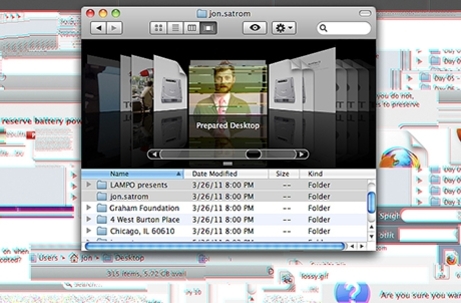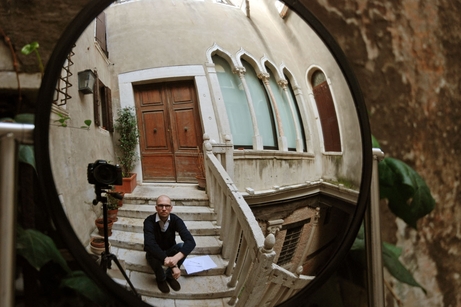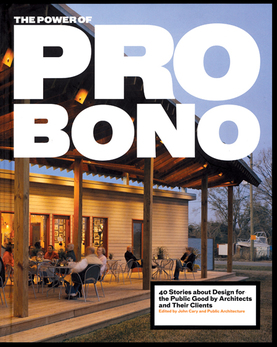Madlener House
4 West Burton Place
Chicago, Illinois 60610
Telephone: 312.787.4071
info@grahamfoundation.org

The Graham Foundation and the Cultural Services at the Consulate General of France in Chicago are pleased to invite you to celebrate the book launch of Spatial City: An Architecture of Idealism with a presentation and reception at the Graham Foundation on Thursday, March 31st from 6-8 p.m.
The evening will include comments by Laurence Gateau, Director of FRAC des Pays de la Loire, Nicholas Frank, Curator of the Institute of Visual Arts (INOVA) at the University of Wisconsin-Milwaukee and Luis Croquer, Director and Chief Curator of the Museum of Contemporary Art Detroit (MOCAD). The presentations will be followed by a toast and reception with the speakers, French Fonds Regional d'Art Contemporain (FRAC) Directors Emmanuel Latreille and Sylvie Froux, Polly Morris, co-editor of Spatial City and Allison Peters Quinn, Director of the Hyde Park Art Center.
ABOUT THE BOOK
Spatial City: An Architecture of Idealism is the catalog from the first touring exhibition in the United States of works from the French Fonds Regional d'Art Contemporain (FRAC). The exhibition takes the work of utopian architect Yona Friedman—and particularly his idea of the “spatial city”—as a point of departure from which to explore contemporary art within the FRAC collections. Spatial City brings together an international, multi-generational array of artists—with an emphasis on artists living in France—whose work contends with utopian thinking and, in counterpoint, the retreat of optimism in the face of pragmatic reality. The exhibition was on view at the Institute of Visual Arts (INOVA) at the University of Wisconsin-Milwaukee; the Hyde Park Art Center, Chicago; and the Museum of Contemporary Art, Detroit in 2010. The exhibits and catalog were supported by the three venues, Platform (FRAC national organization), the Institut Français, the French Ministry of Culture and Communication and the Cultural Services of the French Embassy in the United States The catalog is published by the Institute of Visual Arts (INOVA) and Platform.
Artists featured in the exhibition include Lida Abdul, Cristian Alexa, Élisabeth Ballet, Yves Bélorgey, Berdaguer & Péjus, Monica Bonvicini, Jeff Carter, Maurizio Cattelan/Philippe Parreno, Jordi Colomer, François Dallegret, Peter Downsbrough, Philippe Durand, Jimmie Durham, Simon Faithfull, Didier Fuiza Faustino, Cao Fei, Robert Filliou, Élise Florenty, Dora Garcia, Ben Hall, Camille Henrot, Séverine Hubard, Pierre Huyghe, Stefan Kern, Bertrand Lamarche, Vincent Lamouroux, Didier Marcel, Raphaël Maze, François Morellet, Sarah Morris, Juan Muñoz, Stéphanie Nava, Philippe Ramette, Sara Schnadt, Kristina Solomoukha, Tatiana Trouvé, Hui-min Tsen, Marie Voignier, herman de vries, Steve Wetzel and Raphaël Zarka.
THE CULTURAL SERVICES OF THE FRENCH EMBASSY IN THE UNITED STATES
The Cultural Services of the French Embassy fosters the best of French arts, literature and education to cultural and academic institutions across the United States with a strong focus on the contemporary.
THE FRENCH REGIONAL CONTEMPORARY ART COLLECTIONS (FRAC)
Since 1983, the French Regional Contemporary Art Collections (FRAC), have played an important part in the history of cultural development in France, promoting and defining the role of art in the life of the country though educational programs, research and the creation of knowledge that improves self-understanding and the understanding of others.
INOVA
Since 1996, the Institute of Visual Arts (Inova) at the University of Wisconsin-Milwaukee has established an international reputation as a contemporary art research center. The mission of the Institute of Visual Arts is to engage the general and university publics with contemporary art from around the world through exhibitions and programs.
MOCAD
The mission of the Museum of Contemporary Art Detroit is to present art at the forefront of contemporary culture. As a non-collecting institution, MOCAD is responsive to the cultural content of our time, fueling crucial dialogue, collaboration, and public engagement.
THE HYDE PARK ART CENTER
The Hyde Park Art Center is Chicago’s place to experience contemporary art. Founded in 1939, the Art Center offers new contemporary art from new and emerging Chicago-based artists, as well as classes and community programs. All Hyde Park Art Center exhibitions are free and open to the public seven days a week.

Jon Satrom, Prepared Desktop, 2011
The Graham Foundation and Lampo partner to bring you Prepared Desktop, a new work by Jon Satrom presented in 3-D. For Prepared Desktop, Satrom playfully re-codes conventional computer programs and ordinary operating system elements into a glitch-prone audio/video instrument.
Jon Satrom (b. 1980, Bismarck, N.D.) is a Chicago-based new-media artist who spends his days fixing things, making things work and teaching. He spends his evenings breaking things, learning and searching for the unique blips inherent to the systems he explores and exploits. With a background in video, sound and new media, Satrom has kludged together a collection of home-brew systems for real-time performance, which include custom video games, renegade computer scripts, obsolete display hacks and corrupt data.
Satrom's collaborative projects include I Love Presets alongside Rob Ray and Jason Soliday, PoxParty with Ben Syverson, and Magic Missile with Soliday and Geoff Guy. He has been affiliated with the criticalartware dot net demo krew featuring Jon Cates, Jake Elliott, Tamas Kemenczy and Mark Beasley. He organizes the Chicago GLI.TC/H Festival with Rosa Menkman, Nick Briz and Evan Meaney. Satrom also runs a small production company called studiothread and teaches in the Film Video New Media Animation Department at the School of the Art Institute of Chicago. Satrom first performed for Lampo in June 2009, when he presented the ensemble audio/video project, “Magic Matrix Mixer Mountain,” with Beasley, Cates, Elliott, Kemenczy, Alex Inglizian and Nicholas O’Brien.
Founded in 1997, Lampo is a non-profit organization for experimental music, sound art and intermedia projects. For information and to add your name to the Lampo list, contact info@lampo.org or visit www.lampo.org.
Jon Satrom
http://jonsatrom.com/

Nicolas Grospierre, TATTARRATTAT, 2010.
Artist Talk: 6PM
Opening Reception: 6:30-8PM
Nicolas Grospierre will discuss the Graham Foundation exhibition and his most recent work. This event is free and open to the public.
Nicolas Grospierre (born 1975, Geneva, Switzerland) lives and works in Warsaw, Poland. He studied sociology at the London School of Economics and political science at the Institut d'Etudes Politique de Paris. In 2008, Grospierre and Kobas Laksa were awarded the Golden Lion for Best National Participant at the 11th International Architecture Exhibition in Venice for the Polish Pavilion project, Hotel Polonia. The Afterlife of Buildings. He works predominantly in an expanded field of photography, exploring the social organization of space. Grospierre's work has been shown internationally in exhibitions in Berlin, Brasilia, Madrid, New York, Venice, Warsaw, among other cities.
Nicolas Grospierre
http://www.grospierre.art.pl/
For more information on the exhibition, One Thousand Doors, No Exit, click here.

Celebrate the Chicago launch of the book The Power of Pro Bono, with a panel discussion and reception sponsored by Holcim Awards for Sustainable Construction.
The panel will give in-depth perspectives of projects featured in the book, including the Kam Liu Building of the Chinese American Service League in Chicago and the Roosevelt Park Masterplan from Detroit. Representatives from the firm and nonprofit client will be on the panel, moderated by Public Architecture’s Founder and President, John Peterson. The panel will discuss community involvement, the role of pro bono service in professional practice and how design can impact change locally.
Panelists include:
Jeanne Gang// Principal, Studio Gang
Bernarda Wong// President, Chinese American Service League
Noah Resnick// Principal, uRbanDetail
Brian Hurttienne// Architect & Community Activist, Corktown, Detroit
John Peterson// Founder & President, Public Architecture
ABOUT THE BOOK
The Power of Pro Bono presents 40 pro bono design projects across the country. The clients include grassroots community organizations like the Homeless Prenatal Program of San Francisco, as well as national and international nonprofits, among them Goodwill, Habitat for Humanity, KIPP Schools and Planned Parenthood. These public-interest projects were designed by a range of award-winning practices, from SHoP Architects in New York and Studio Gang in Chicago, to young studios including Stephen Dalton Architects in Southern California and Hathorne Architects in Detroit, to some of the largest firms in the country, such as Gensler, HOK and Perkins + Will. Scores of private donors, local community foundations and companies, and material and service donations made these projects possible. So have some of the most progressive funders in the country, ranging from Brad Pitt's Make It Right Foundation in New Orleans to the Robin Hood Foundation in New York. Taken as a whole, the selected works represent six general categories: Arts, Civic, Community, Education, Health and Housing. This book is inspired and informed by the advocacy and design work of Public Architecture, a national nonprofit founded in 2002 by San Francisco-based architect John Peterson. The 1% program of Public Architecture challenges architecture and design firms nationwide to pledge a minimum of one percent of their time to pro bono service, leveraging in excess of $25 million in donated services annually.
ABOUT PUBLIC ARCHITECTURE
Established in 2002, Public Architecture identifies and solves practical problems of human interaction in the built environment and acts as a catalyst for public discourse through education, advocacy, and the design of public spaces and amenities.
Public Architecture
http://www.publicarchitecture.org/home.htm

Venice and Modern Architecture, or Venice and Modernism altogether make an odd couple. According to Filippo Marinetti, the author of the Futurist Manifesto (1909), gondolas are no more than “rocking chairs for idiots.” One hundred years later, we must acknowledge that rather than being its opposite, the passatismo castigated by Marinetti is a powerful aspect of modernity. In fact, John Ruskin’s incantations of the waves of the laguna dangerously rippling against the “Stones of Venice” have transformed the city into one of the 20th century’s proverbial tourist destinations and resulted in an extravagant race against Las Vegas. The lecture is about the architecture of Robert Venturi and Denise Scott Brown and the way it has turned this race into art.
Stanislaus von Moos, a Swiss Art Historian, has published monographs on Le Corbusier (1968ff.), Italian Renaissance Architecture, the History of Industrial Design in Switzerland (1992) and the Architecture of Venturi, Scott Brown & Associates (1st volume 1987; 2nd volume 1999). More recently he published Le Corbusier Before Le Corbusier (ed., with Arthur Rüegg, 2001) and Ernst Scheidegger. Chandigarh 1956 (ed., 2010). Currently he is interested in the culture of the Cold War era and the cross-pollinations between architecture and the visual arts since 1970. He has been professor of Modern Art at the University of Zurich (1983-2005) and is presently the Vincent Scully Visiting Professor at Yale University.
Unless otherwise noted,
all events take place at:
Madlener House4 West Burton Place, Chicago
GALLERY AND BOOKSHOP HOURS
2025 Chicago Architecture Biennial
SHIFT: Architecture in Times of Radical Change
Sep 19, 2025–Feb 28, 2026
Wed–Sat, 12–5 p.m.
CONTACT
312.787.4071
info@grahamfoundation.org
Accessibility
Events are held in the ballroom on the third floor which is only accessible by stairs.The first floor of the Madlener House is accessible via an outdoor lift. Please call 312.787.4071 to make arrangements.
Copyright © 2008–2025 Graham Foundation. All rights reserved.
 PREVIOUS POSTS
PREVIOUS POSTS